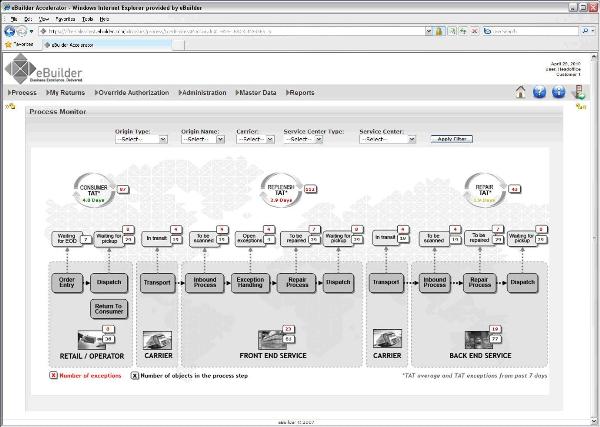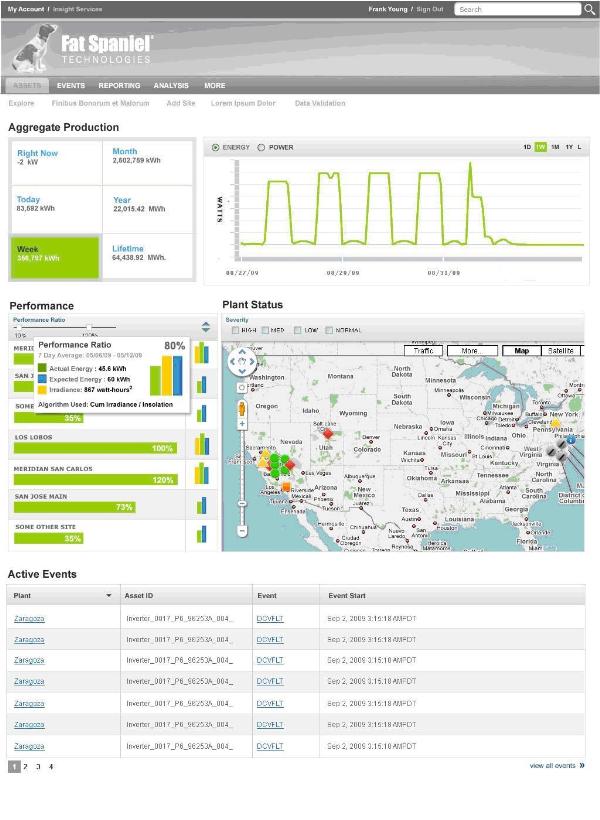The BI Revolution: A New Generation of Analytic Applications
The best analytic applications will help improve business processes, monitor and manage critical business events, and deliver richer information through both contextual relevance and analytic insight.
Editor's note: Each month, Jaspersoft CEO Brian Gentile's The BI Revolution column takes a closer look at key BI/DW issues that affect all BI professionals.
by Brian Gentile
Depending on how you measure it, business intelligence is either 52 or 21 years old.
In 1958, IBM researcher Hans Peter Luhn defined intelligence as "the ability to apprehend the interrelationships of presented facts in such a way as to guide action towards a desired goal." If he’d only substituted the words “software program” or “system” for “the ability to.” then he would have directly anticipated a business today worth more than an estimated $8 billion per year.
In 1989, Howard Dresner (later a Gartner Group analyst and currently the principal of Dresner Advisory Services) proposed BI as an umbrella term to describe “concepts and methods to improve business decision-making by using fact-based support systems." By the late 1990s, this concept of business intelligence was reasonably well understood. Today, 21 years later, everyone uses BI to help make sound, fact-based decisions, right?
Wrong.
We know from a variety of analyst research (from IDC and Gartner/Dataquest, among others) that business intelligence is, at best, used by 20 percent of the business audience that should. How can this be? The ugly truth is that traditional business intelligence is too costly and complex -- serving as natural constraints to more pervasive use. Spend any time with senior IT executives and you’ll hear an earful about BI projects that never reached their potential for reasons of cost and complexity.
There is hope. For one, a new breed of operational business intelligence is emerging to provide analytic insight precisely where and when it is needed. Embedded within or alongside functional software systems and delivering “specialty analytics,” a new generation of analytic applications holds real promise to help close the BI usage gap. Done correctly, business users may not even recognize that they are “analyzing” data. Pervasive use may arise directly from this simplicity and utility.
The BI platforms that are enabling this new level of pervasiveness are fundamentally different than the older, traditional BI systems they are so often replacing (or supplanting). These new, lightweight, modern, Web-based architectures provide simple, programmatic control of even sophisticated reporting and analytic functionality. Easy customization and extensibility allow seamless integration within a functionally specific application that solves some business problem and delivers analytic insight as a key ingredient.
These modern, embedded BI platforms help next-generation analytic applications deliver on the elusive promise of pervasive BI. To fulfill this destiny, though, the applications must possess a powerful blend of process-orientation, intelligent event processing, contextual relevance, and analytic insight. Let’s take a look at each in turn.
Process-Orientation
A great analytic application helps automate and improve a business process (defined as a collection of inter-related business activities that increase the value of a product / service or support its creation, distribution and management). Ideally, the automated system should help streamline a process (making it shorter and more deterministic), saving money and time as a result. Delivering analytic insight within the improved process system enables greater confidence in decision making and a “closed loop” to help drive constant improvement.
For example, the Nuclear Regulatory Commission desperately needed a more elegant way to track and process a growing deluge of requests for information on the disposition of nuclear materials that could affect the nation’s nuclear infrastructure. To improve both its action- and correspondence-tracking, the NRC chose BizFlow BPM from HandySoft as the foundation to its Electronic Document and Action Tracking System (EDATS) that serves 18 NRC offices and 4,000 agency employees. Leveraging BizFlow’s real-time process automation capability, EDATS automatically opens a “ticket” (or case) and initiates defined processes when tasks are submitted to the agency, then allows knowledge workers to route actions in a dynamic fashion to others for feedback, review, notifications, and approvals -- all while providing reporting and analytic insight along the way.
Through its use of EDATS, the NRC saves a minimum of 75 person-hours each day, which equals $1.5M in annual savings. This ROI earned it Gartner’s inaugural Business Process Management Excellence Award.
Intelligent Event Processing (aka Business Activity Monitoring)
Some of the most advanced analytic applications can intelligently monitor other systems for business events (or triggers) that can cause a variety of downstream process adjustments to occur. Some of those adjustments require human thought and intervention (such as when a parts shortage requires a product design change) and some can be managed simply between systems (such as a low stock level triggering a standard re-order). The more sophisticated the process, the more likely that events within could be monitored and acted on intelligently, through the use of an analytic application.
For example, eBuilder uses its expertise in supply chain, procurement, and travel management to help automate and optimize processes for its customers, delivering its analytic application using a SaaS model for even greater efficiency. Within its After Sales solution module, eBuilder provides simple, visually impactful measurement and monitoring that spans the organization’s supply chain. As milestones are met and events are logged, the eBuilder application can trigger different downstream activities to proactively manage issues or bottlenecks in the network -- resolving them before they impact the customer and the bottom line. This is a clever use of business activity monitoring within the functional flow of a process, to deliver better insight, analysis, and results to its customers. The eBuilder screen below describes a common After Sale process and identifies key events where, depending on the results data, a variety of next-step actions can occur.

Contextual Relevance
The best analytic applications deliver a broad and complete set of information, all relevant to the decision-maker and task at hand. The key to delivering relevant information successfully is understanding the context of the decision maker. Some relevant information may come from within the application system and its internal data set -- presented using tables, graphs, and charts that are appropriate for easy visualization and display. Other information might come from external sources but with added richer context and insight because it is important and complementary and supplied right alongside the internal data. In total, it is the clever blend of information types that enable better decisions and a good analytic application delivers plenty of information.
Fat Spaniel Technologies provides a solid example of an analytic application that delivers an array of contextually relevant information to directly aid insight and decision-making. Fat Spaniel is a leading independent provider of SaaS-based monitoring and analysis tools for the renewable energy industry, serving thousands of power plants in 23 countries. Its Insight Platform provides a comprehensive, accurate Web view of solar energy system performance. The information is used by system installers to schedule service visits and optimize the installation for peak performance, and by owners to track and display solar energy generation and usage. Fat Spaniel’s revenue-grade reporting capabilities can even provide the data required to take advantage of performance-based incentives and emerging carbon and renewable energy credit (REC) markets.
With a clear understanding of the context required by the end user fully integrated, Fat Spaniel delivers rich, relevant information for decision making. Customers can view and monitor the average monthly photovoltaic power (PV) generated at a site, show a distributed generation plant portfolio on a map, compare expected energy generation performance to actual, and get the expected PV energy and the actual PV energy for a plant site or many plants distributed across a portfolio. The Fat Spaniel analytic application is used to monitor thousands of plant sites, hundreds of customers, and more than 200 megawatts of renewable energy generation and millions of new packets of energy intelligence information daily.
Further, some data views even provide relevant external information (maps and news) that save valuable time for decision makers. Below is a sample screen, showing just one view from the Fat Spaniel system. Note the array of chart types and data displays as well as integrated external information (map information).

Analytic Insight
Fundamentally, an analytic application is supposed to deliver analytic insight – at the right place and time -- so superior understanding of the business and better decisions result. Ideally, that analytic insight comes from a deep understanding of the business domain being analyzed and a complete set of tools made easily available that enhance this process, not hinder it. The key here is delivering simple, powerful access to analytic insight, not complicated power features that are used by few. When the dust settles, an analytic application better get this part right, or it fails its first test.
Monolith Software Solutions, also known as OneDataSource.com, provides a SaaS-based analytic application for the quick-serve restaurant industry. Monolith’s suite of tools enables its customers (usually operating multiple restaurants) to more effectively track and manage restaurant performance, typically at a cost significantly below that of its competitors. The Monolith solution empowers restaurant owners to consolidate, separate, and analyze their store performance along a wide array of dimensions: geography, product type, product groups, a range of demographics, among others.
To do so effectively for a variety of user types, the application implements an assortment of BI techniques, including reports, dashboards, self-service ad hoc query building, and flexible multi-dimensional analytics. To keep it simple, OneDataSource.com delivers all this through a purely Web-based open interface (portal-based), using all modern interface techniques that drive low training requirements and high adoption. How else could it deliver analytic insight to a customer otherwise unaccustomed to business intelligence?
Next Steps for a New Generation
How will business intelligence software become truly pervasive? By not being business intelligence software, of course, but by being seamlessly embedded into an application that solves a business problem and is more naturally embraced by a business user. Those of us who have been in and around BI for a long time know that these business problems commonly have analytic roots; using business intelligence functionality to help solve the business problem is both powerful and practical.
The best analytic applications will help improve business processes, monitor and manage critical business events, and deliver richer information through both contextual relevance and analytic insight. That’s a new generation of business intelligence that could help us forget about the last.
 |
Brian Gentile is the chief executive officer of open source business intelligence software company Jaspersoft. You can contact the author at [email protected]. |